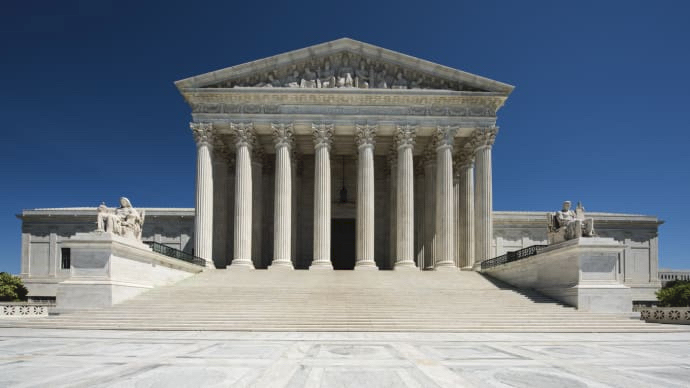By Dee Anna Hays and Phillip Russell
On Thursday, January 13, 2022, the Supreme Court of the United States stayed the Occupational Safety and Health Administration’s (OSHA) COVID-19 Vaccination and Testing Emergency Temporary Standard (ETS). The Supreme Court remanded the case to the Sixth Circuit Court of Appeals, which will consider the merits and make the ultimate decision as to whether OSHA has exceeded its authority. However, the Supreme Court’s decision left virtually no room for the ETS to survive and employers should look forward to what OSHA may do without the ETS being in effect.
The Supreme Court’s Decision
The issue before the Supreme Court was whether the Sixth Circuit Court’s decision to dissolve a stay and allow the ETS to go into effect should be overturned. In a per curiam decision, the Court disagreed with the Sixth Circuit and imposed a stay. The Court began by discussing the unprecedented nature of the ETS. OSHA rarely issued emergency temporary standards, and, when it did, federal courts seldom upheld them. The Court was awed by the breadth of the ETS. While the ETS did contain exemptions, the Court commented that the exemptions were “largely illusory,” such as the one for “exclusively outdoor” work. The “regulation otherwise operates as a blunt instrument,” the Court wrote, and “draws no distinctions based on industry or risk of exposure to COVID-19. Thus, most lifeguards and linemen face the same regulations as do medics and meatpackers.”
Because of its broad scope, the Court found that OSHA did not have the authority to promulgate the ETS. The Occupational Safety and Health (OSH) Act “empowers [OSHA] to set workplace safety standards, not broad public health measures.” (Emphasis in original.) Issuing the ETS is not an “everyday exercise of federal power,” the Court wrote, but rather a “significant encroachment into the lives—and health—of a vast number of employees.” The Court found:
The Court found that had OSHA been more deliberate and focused about the employers covered by the ETS, it might have survived judicial scrutiny. “Where the virus poses a special danger because of the particular features of an employee’s job or workplace, targeted regulations are plainly permissible,” the Court wrote, noting that OSHA could “regulate researchers who work with the COVID–19 virus” or “regulate risks associated with working in particularly crowded or cramped environments.” However, an occupational safety and health standard that applies to every workplace with 100 or more employees—without regard to the actual conditions in those workplaces—is too broad. “OSHA’s indiscriminate approach fails to account for this crucial distinction—between occupational risk and risk more generally—and accordingly the mandate takes on the character of a general public health measure, rather than an ‘occupational safety or health standard,’” the Court wrote.
Citing to a recent decision, the Court wrote it expects Congress to “speak clearly when authorizing an agency to exercise powers of vast economic and political significance.” The ETS undisputedly exercises such power, and the Court held the OSH Act did not plainly authorize the ETS. Because the ETS attempts to address a public health measure, and not set an occupational safety and health standard, the Court found OSHA exceeded its authority under the OSH Act. The Court granted the applicants’ requests for emergency stay and remanded the case to the Sixth Circuit for disposition of the challengers’ petitions for review.
What Happens Now?
The Supreme Court remanded the case to the Sixth Circuit Court of Appeals to determine whether OSHA has the authority to promulgate the ETS. As important, the ETS expires six months after issuance—or on May 5, 2022. Depending on the briefing and argument schedule, the Sixth Circuit may not decide before the ETS expires.
What Are OSHA’s Options?
Rather than ask what the Sixth Circuit will or won’t do – a better question is what will OSHA do now? OSHA has two likely options to consider. The Supreme Court’s decision staying the ETS did not prohibit vaccine mandates and it left open the possibility for OSHA to take a more narrowly tailored approach. It also left open the possibility for Congress or the States to enact such measures.
First, withdraw the ETS and rely upon the General Duty Clause, existing OSHA standards, and OSHA’s current National Emphasis Program (NEP) that recognizes certain high-hazard industries require more stringent measures. The General Duty Clause requires employers to maintain a workplace “free from recognized hazards.” Regarding COVID-19, OSHA must show that an actual COVID-19 hazard exists in the workplace—it is not enough to show that an employee could have had COVID-19 at work and transmitted it to other workers. OSHA must also show that the steps it requires employers to take to mitigate COVID-19—such as testing, masking, and vaccination—are technologically and economically feasible.
Second, OSHA could withdraw this ETS and issue a new, targeted ETS (or a regular, non-emergency standard). Either approach would fit within what the Supreme Court said would be a “plainly permissible” approach that identifies workplaces “where the virus poses a special danger because of the particular features of an employee’s job or workplace.”
OSHA has not yet indicated which approach it will take. However, the agency accepted comments on the ETS through January 19, 2022. Comments were solicited by OSHA because the agency is considering whether to issue a COVID-19 standard using its non-emergency regulatory authority. Over 120,000 comments were submitted, which is a record number of comments ever submitted for any proposed federal regulation.
Further, on January 13, 2022, Secretary of Labor Marty Walsh made it clear that OSHA will continue its enforcement efforts by stating:
Regardless of the ultimate outcome of these proceedings, OSHA will do everything in its existing authority to hold businesses accountable for protecting workers, including under the Covid-19 National Emphasis Program and General Duty Clause.
What Does This Mean for Employers?
The Supreme Court decision leaves states free to regulate employers regarding COVID-19. Twenty-two states have their own federally approved OSHA plans. Federal OSHA has no jurisdiction over private employers in those states with approved plans. State OSHA plans may adopt occupational safety and health standards if they are “at least as effective” as federal OSHA standards. Given the stay, OSHA does not currently have a COVID-19 standard in place, leaving state OSHA plans to adopt standards (or decline to do so) that are the same as the ETS or less protective. For example, a state OSHA plan could adopt a standard that requires vaccination or masking but does not include weekly COVID-19 testing. And, a number of state OSHA plans have announced that they are canceling plans to adopt the ETS, or will not enforce what they have already adopted.
The ETS also loses its preemptive effect in states without federally approved state OSHA plans. Laws restricting the ability for employers to impose vaccine mandates have been enacted in Florida and other states as well. If it were in effect, the ETS would preempt these state laws because they frustrate the overall regulatory scheme OSHA tried to impose by foreclosing employers from adopting one option in the ETS—vaccine mandates. Without the ETS, Florida and other states may regulate or legislate regarding COVID-19 as they see fit. Employers should continue to monitor State and local government regulations as they too consider what to do after the demise of the ETS. Employers should also review the NEP to determine whether they are in a high-hazard industry that OSHA will target for COVID-19 inspections. Ultimately, employers who do something rather than nothing will do the best in avoiding liability under the OSH Act.
Finally, it is worth noting that while the Supreme Court stayed the ETS, it did not similarly block the Centers for Medicare & Medicaid Services (CMS) rule. On January 13, 2021, the Supreme Court stayed the injunctions against the healthcare interim final rule, which allows the CMS to now enforce its vaccine mandate nationwide. Executive Order 14042, which applies to certain federal contractors, remains stayed pending the outcome of multiple legal challenges, and is not presently on the docket for review by the Supreme Court.
Phillip Russell and Dee Anna Hays are shareholders in the Workplace Safety & Health Practice Group at Ogletree Deakins, a global labor and employment law firm representing management.

Ogletree Deakins Tampa
phillip.russell@ogletreedeakins.com
www.ogletree.com

Ogletree Deakins Tampa
deeanna.hays@ogletree.com
www.ogletree.com
